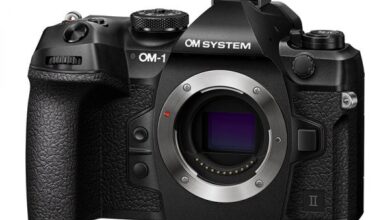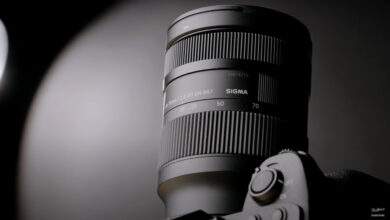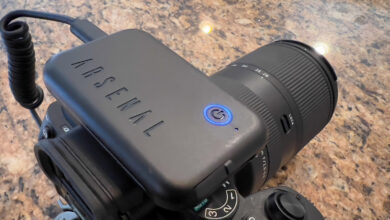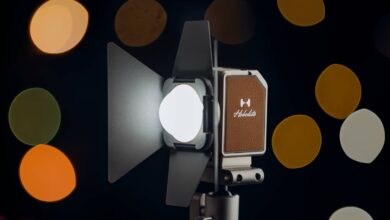Are The Nikon Z8 and Z9 The Perfect One-Two Punch?
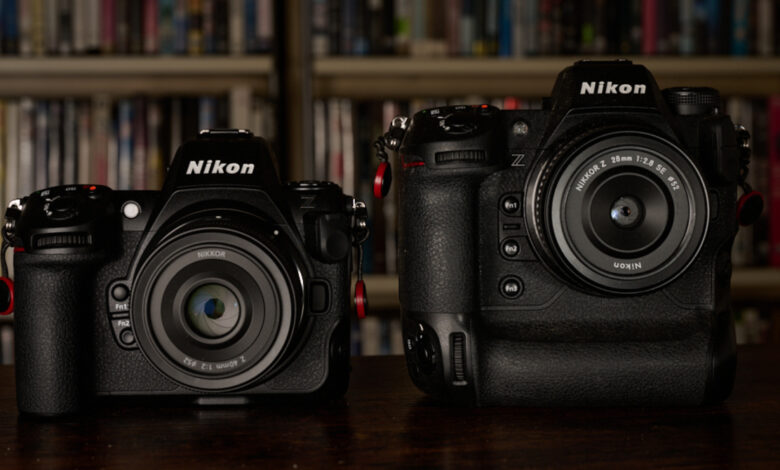
Today, a brief thought on when, sometimes, the solution isn’t X or Y, but X and Y.
I am the proud owner of two Nikon Z9s. After several years of buying cameras that didn’t quite live up to my needs as a photographer or my expectations, finding the Z9 a couple years ago has literally saved me money and allowed me to no longer obsess over the need to upgrade my camera at any point in the near-future. I’ve written about it a lot before, but, for the sake of simplicity, let’s just say that it does everything I need it to do as a professional photographer in my specific niche. And I can’t think of much I would change. Well, I can think of a few things as outlined in my article about my Nikon wishlist. Mostly firmware based. But, all in all, it’s all good.
Then came the Z8. I know fans of the Z8 likely get sick of it always being compared to the Z9. But, if we are being honest, it’s impossible not to mention the Z9 when discussing the Z8 because they are both essentially the same camera. There are differences, which I will get to in a moment, but those differences pertain to workflow as opposed to performance. So, a compliment to the Z8 is likely a compliment to the Z9, and vice versa.

Of course, the main obvious difference is the roughly $1,500 price difference between the two cameras. The camera’s size difference may or may not affect you, but everyone likes to not spend more than they have to. So, even as a proud owner of a pair of Z9s, I had to consider whether or not having a pair of Z8s instead would have made more sense. By the way, it is important at this point to mention that the Z8 didn’t exist when I purchased my Z9s, so this is purely an intellectual exercise rather than a choice I really had to make. But, thinking about the question and wondering what I would do if faced with the prospect of making a fresh decision between the two in the current day has led me to think that option C might actually be the best choice. Rather than purchase two Z9s or two Z8s, I think I would purchase one of each.
A few sidenotes before I explain why. First, if you’re wondering why one would even need two cameras instead of one, that answer simply boils down to, as a professional photographer on set in front of demanding executives, not having a backup camera is not really an option. Even if it never comes out of the case, you simply cannot afford to go up to your client on a six-figure production and say, “Oh, I’m sorry, my camera malfunctioned, can we just come back and do this later when it gets fixed?” Yeah, that’s not really going to go well for you, so traveling with two cameras is a must. The only question is how you go about filling the slot on your bench.
There are a great deal of benefits to your two bodies being identical. My current pair of Z9s is actually the first time I’ve ever had two identical bodies. Previously, I would usually have an older model and newer model as my backup and starter. But I have found having identical cameras to be incredibly useful. Not only is there zero mental adjustment required when switching from camera A to camera B, but all of the myriad of accessories needed for your system are now interchangeable. So you no longer need to worry about bringing a bunch of random parts in duplicate since some of them only pertain to one of the bodies. Things like camera cages, batteries, cables, and all matter of mounted devices are streamlined, doing wonders for your efficiency.
So, why would I suggest that, in the case of the Z8 and Z9, one might consider the mismatch to be an advantage? Well, it starts with the initial premise. In terms of performance, these are essentially the same camera. They have the same number of megapixels, they shoot the same number of frames per second. Their video specs are essentially identical. Menus and button placement are going to be very close. There are differences, for example the Z9 has the elevated mode dial and creature comforts, but the variations aren’t so crazy that switching between the two would pose any real concern.

The difference is really a matter of one’s personal needs. As a proud Z9 owner, I can tell you that this thing is built like a battleship. I feel confident that I can take it into any environment, any weather condition, and shooting scenario and it will simply work. I remember one time I was talking to a friend of mine and we were trying to define what made a particular friend of ours, Walter, “tough.” We were in a bar at the time, and the most succinct way I could put it was to say that, if a bar brawl broke out at that particular moment, and it was every man for himself, you could carry on with your own battle without having to worry about Walter. He was tough enough to take care of himself. So, you simply needed to fight your own battle. That’s kind of the Z9 in a nutshell. You never have to worry about your camera being the weak link. It’s the no holds barred solution. It will take anything you throw at it without complaint. So, if you are a photographer who is going to potentially be working in tougher and more unpredictable environments where having your camera fail is simply not an option, the Z9 is worth the extra money. If nothing else, it gives you peace of mind that you don’t have to worry about your camera being an obstacle to getting the shot. The build quality, the redundant CF Express card slot, the massive battery that can last all day (or many days if you find yourself unexpectedly in a remote location). This is the camera for those who can’t take no for an answer.

Of course, all that dependability comes with size. The next biggest delineation between the Z8 and Z9 is the sheer girth. Now, I should mention that the larger physical presence of the Z9 has surprisingly not bothered me. Oddly enough, I actually think I prefer it. Prior to owning the Z9, I only ever had D850-sized bodies, which are similar to the Z8 physical profile. The built-in grip cameras like the D6 were not best suited for my workflow in terms of resolution, so I never had a reason to own one. Even now, with the built-in grip Z9, I default to turning my wrist rather than the camera when shooting verticals. So, I can’t even say that my enjoyment of the Z9’s larger body is a result of orientation. Rather, I find that I just really like the ergonomics of the system. Especially when paired with Z glass.
Nikon makes the best mirrorless lenses in the business right now. From sharpness to control of focus breathing, these lenses are miracles. They are not, however, small. There are all kinds of scientific and mathematical reasons for why the lenses need to be the size they are to offer the performance they do. I am neither capable nor inclined to break out the white board and explain how the size vs performance ratio works. But, long story short, the performance of the lenses necessitates them being slightly larger in many cases. Because of this, I personally find that the lenses often balance better on a larger body. On a smaller body, big lenses can make everything feel front heavy and strain my wrist. When the camera body itself has a bit of size, there’s an easier balance between camera and lens. In my case, this makes the combined package sit easier in my hand and I find it to be a more comfortable hold.

Of course, that larger size also has its drawbacks. While the larger sturdy body provided peace of mind in various shooting scenarios, it may be overkill in others. If I’m shooting in a scenario where I am in much more control of my set and don’t need to worry about inclement weather or an unpredictable location, then the Z8 is more than capable of handling that job. Even if the weather gets a bit wild and the location unpredictable, the Z8 is probably still sturdy enough to get the job done. The Z9 is no holds barred. But the Z8 is no featherweight. It’s pretty tough on its own. More than tough enough to be the backup to the Z9.
Plus, the Z8 comes with the advantage of being physically smaller. The immediate benefit of this lighter weight is that you have less to carry. That’s obvious. Lighter camera. Lighter luggage. But, personally, the bigger benefit of the smaller camera is that it is less conspicuous. If I just want to do some street photography for instance, going unnoticed with a Z9 is pretty impossible. But, while the Z8 isn’t exactly a Z fc, it is still small enough to be viewed as a “regular” camera by casual observers on the street. Likewise, sometimes, for the sake of logistics, one has to shoot in public locations that, well, let’s just say are not welcoming with open arms. Perhaps you can get in if you shoot quickly and get out. Well, going under the radar is much easier to do when your camera doesn’t scream out: “I’m a professional.”

There are, of course, more practical benefits to going smaller. I’m not a wedding photographer, but I can imagine that if you need to be carrying multiple bodies simultaneously, the idea of multiple smaller bodies is appealing. If you have smaller hands or trouble lifting a heavier camera, then small is a clear benefit. If you are a travel photographer and want to minimize your carry-on weight, then smaller is better. Or, if you don’t need the longer battery life, are never going to benefit from the vertical grip, and don’t mind your backup card slot being SD instead of CF Express, then opting for a lighter and less-expensive body becomes a no-brainer.
There are endless use-cases which will better determine which size of camera would be best for you. And, ultimately, that is what leads me to think that, due to unique operational similarities between the two cameras, the best solution for most professional photographers might be to have one of each. The Z9 for the times when compromise is not an option. The Z8 for times when smaller size works to your benefit. The Z9 when needing to balance with some of Nikon’s larger professional lenses, especially the longer wildlife lenses. The Z8 when you are shooting in a more controlled studio setting or needing to pack light. Both are capable of starting. Both are capable of coming off the bench to spell the other.

Because the two bodies offer identical performance, you have the option of choosing the body that works best for a particular assignment without needing to compromise what or how you can shoot. In short, by having one of each, you can simply scale up or scale down on the fly without having to worry about being unable to capture what you need, either in the most demanding of environments or in the more controlled.
As someone who owns a pair of Z9s, I can tell you that going that route will not leave you disappointed. And, I’m sure that someone who owns a pair of Z8s will tell you the same. But having one of each? That might just be the sweet spot.
